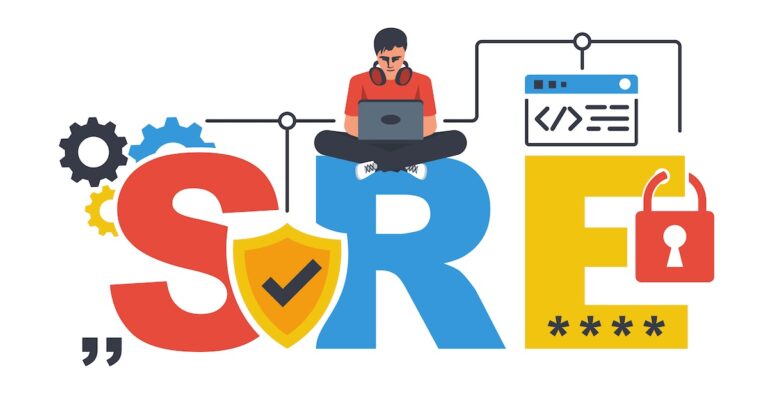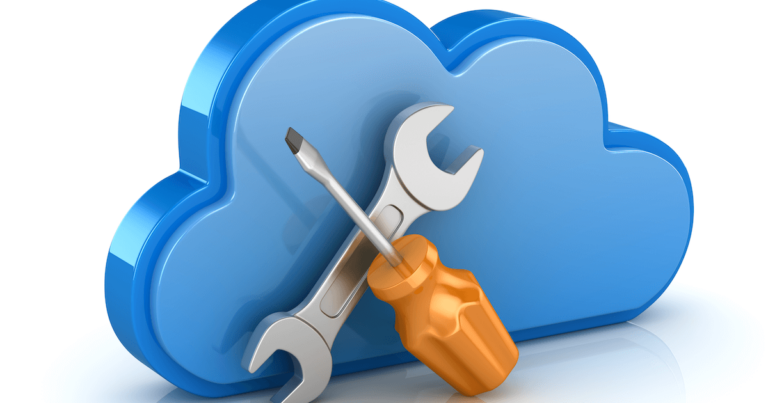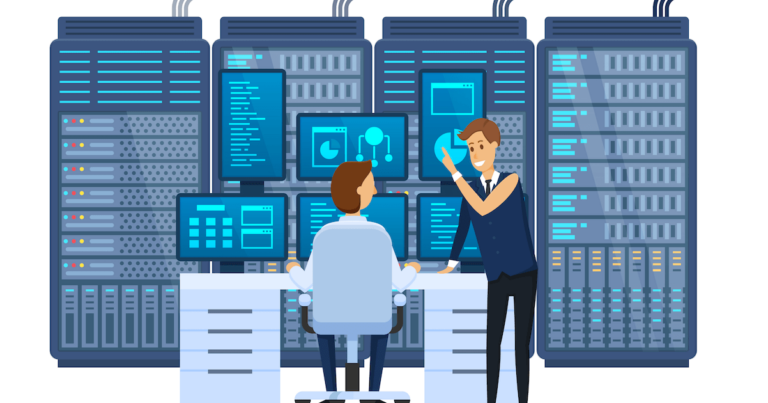Businesses rely heavily on their networks and servers, and regular server maintenance must be performed to keep them functional. Preventive maintenance keeps servers running as expected and allows businesses to operate smoothly and avoid downtime or loss of data. This includes reviewing server performance, ensuring that automated system monitoring utilities are correctly installed and configured, identifying potential security risks, and backing up data at regular intervals.
Importance Of Network And Server Maintenance
“An ounce of prevention is worth more than a pound of cure.”
Source – Unknown
Within a moment, without warning, disaster can affect your computers, networking, servers, software, and other elements of your work environment – leaving you crippled and unable to operate. Bad things are bound to happen, whether it’s a virus, a hacker, a piece of unsupported software, or an obsolete piece of hardware. But there are ways to identify the warning signs and take action in time. Preventive monitoring and maintenance engineers thus help organizations seek cost-effective solutions to tighten IT oversight across web-based, cloud-based, or on-premise software and the collaborative hardware and equipment interconnecting them and delivering long-term system sustainability.
As an IT professional or network/security engineer, if you have to deal with the following statements in your organization on a day-to-day basis, you must understand that there is a dire need to implement preventive maintenance for networks and servers:
- The server crashes because it runs out of disk space.
- Mailboxes on the Microsoft Exchange database become full, so users can no longer send or receive emails.
- A service stops running on servers (e.g., email, database, licensed software), limiting the employees’ productivity.
- Your anti-virus software is not up to date or is disabled for some reason (for example, an employee disabled it manually; your network is infected with a virus that disables your anti-virus software)
- An employee hacking his iPhone (called “jailbreaking” or “rooting”) to install unauthorized software creates a security breach that exposes the corporate network to a hacker.
Immediate, reliable access to information is critical to the operation of a company. A company’s servers deliver and process the information its user needs at the speed of light. For servers to operate at peak performance, it’s essential to look under the hood. That’s precisely what network/security engineers do at regular intervals, giving companies the confidence to have a well-tuned monitoring interface. Some of the most typical maintenance routines performed by these engineers are:
- Checking disk usage and optimizing usage
- Checking for critical operating system vulnerabilities that need to be updated and patched
- Looking for hardware errors by examining each piece
- Diagnose the power supply
- Testing network security and tweaking or improving it to suit client needs
- Updating network security software and hardware
- Ensuring that regular backups are being done to prevent total loss of data
- Upgrading any required components that are out of date or need to be updated
Why Do You Need Preventive Maintenance For Networks And Servers?
Servers and networks are not “set it and forget it” devices. Like cars, enterprise IT requires preventive maintenance and on-demand diagnostic evaluations to troubleshoot problems. Here are three reasons you should take advantage of preventative maintenance—and root out the problem before you have one.
1. Downtime Is Extremely Expensive
How much money does your business make in each hour it should operate but can’t? Fire, cybercrime, or even mishandling of devices or data has cost companies millions in recoveries per person per hour. You can imagine how much this would cost – and that’s just considering labor costs. Once you include lost opportunity costs, customer service costs, damaged reputations, supply chain disruptions, and other negative impacts, costs add up quickly.
Every hour your network doesn’t work costs your business money. It is far less expensive to address these problems before they become more prominent, costly problems that take longer to heal and cause more disruption.
2. Your Data Is Exceptionally Vulnerable
The most fragile and valuable component of a company’s network is business data. As technology advances, so do opportunities to wreak havoc on corporate data such as customer personal information, transactional data such as credit card details, essential email IDs and associated passwords, and more.
Imagine what would happen if essential data was corrupted, stolen, lost, or otherwise compromised. For most businesses, that could expose them to financial consequences and legal compliance repercussions.
Preventive maintenance involves testing your backups on a scheduled basis to ensure that your data is backed up, secured, and replicated onsite and offsite for maximum security. It can also help maintain your system to identify security vulnerabilities as they occur – not if they are exploited.
3. Your Systems Have Critical Points of Failure
Finally, now your infrastructure operations may be at risk because of overlooked-but-present points of failure or weak spots in the process. Preventive maintenance can identify weak links in your IT infrastructure and review them before they have a chance to break, causing damage to the rest of your system. Procedures and procedures generally include:
-
Checking System Health
A professional takes care of old, unused files, streamlines processes, frees up resources, and boosts overall productivity by identifying warnings and critical errors that would otherwise be lost without maintenance planning and monitoring software. Can’t get attention.
-
Checking Security Health
Security engineers regularly sweep and monitor systems for harmful internal and external behavior, vulnerabilities, unpatched software, insecure ports, ineffective firewalls, attempts to break into your defenses, and other signs of security risks with a proactive maintenance plan.
-
Checking Infrastructure Health
Network engineers look at your physical equipment – computers, networking, storage, servers – and make sure they are updated and performing as expected while helping to forecast replacement timelines and budgets.
How do Site Reliability Engineers help In Preventive Maintenance of Enterprise IT?
In modern application development environments, everything is monitored. These are the site reliability engineers who look after designing and implementing preventive maintenance to resolve reliability issues by fixing errors for applications and infrastructure of large-scale, cloud-native software systems. SRE practices not just help monitor, audit, and troubleshoot problems related to downfall or mishaps with or within the IT resources but also look after the SLA and SLO.
Deep dive into SRE fundamentals defined using SLA, SLO, and SLI and their importance in ensuring reliability and availability of an application and infrastructure.
SRE engineers use well-defined standard operating procedures, which is the heart of the SRE approach, allowing enterprises to ensure better performance and experience in their business. To achieve the desired reliability of the system, SRE engineers establish reliability and maintenance policy as an internal communication method that needs to be followed to understand the goals of preventive maintenance programs and how to measure success. Here are the steps to achieving preventative maintenance with SRE:
1. Outline Current State vs. Future State
It is all about conducting preventive maintenance and identifying gaps in the processes that need to be improved over a period of time or after specific intervals.
2. Establishing Goals and KPIs
Establishing goals and KPIs enables you to measure success. Potential KPIs that the SRE team strives to manage and maintains are:
- Service-level agreement adherence
- Time spent on reactive vs. preventive maintenance
- Managing alerts and escalations for services in production
3. Creating an Improvement Plan
This is the most crucial and most challenging to put into place. It requires an honest look at where the team can improve. Hence, it requires the participation of stakeholders across the firm to recognize where they see gaps in the processes and areas for improvement.
4. Develop a Continuous Monitoring Model
Unlike traditional maintenance policies that demand maintenance of a system in one, three, and five years, preventive maintenance as site reliability engineering is about real-time monitoring and being prepared with agility to troubleshoot incidents.
Conclusion
Preventive maintenance site reliability engineering is an advanced operating model to manage an enterprise’s modern IT and operations requirements. With cloud and DevOps, it has become a must as it can detect failures before they happen so that preventive maintenance can be identified. During an inspection, engineers can find evidence that the server or equipment is approaching the end of its life, and they can delay the failure, prevent the resources from happening or replace the equipment at the earliest convenience rather than allowing the failure to occur and cause severe consequences for the enterprise.
Site reliability engineers use tools that come in different types to effectively ensure the monitoring and alerting of systems. Check here the exclusive list of top SRE tools used for Enterprises IT for effective incident response management.




